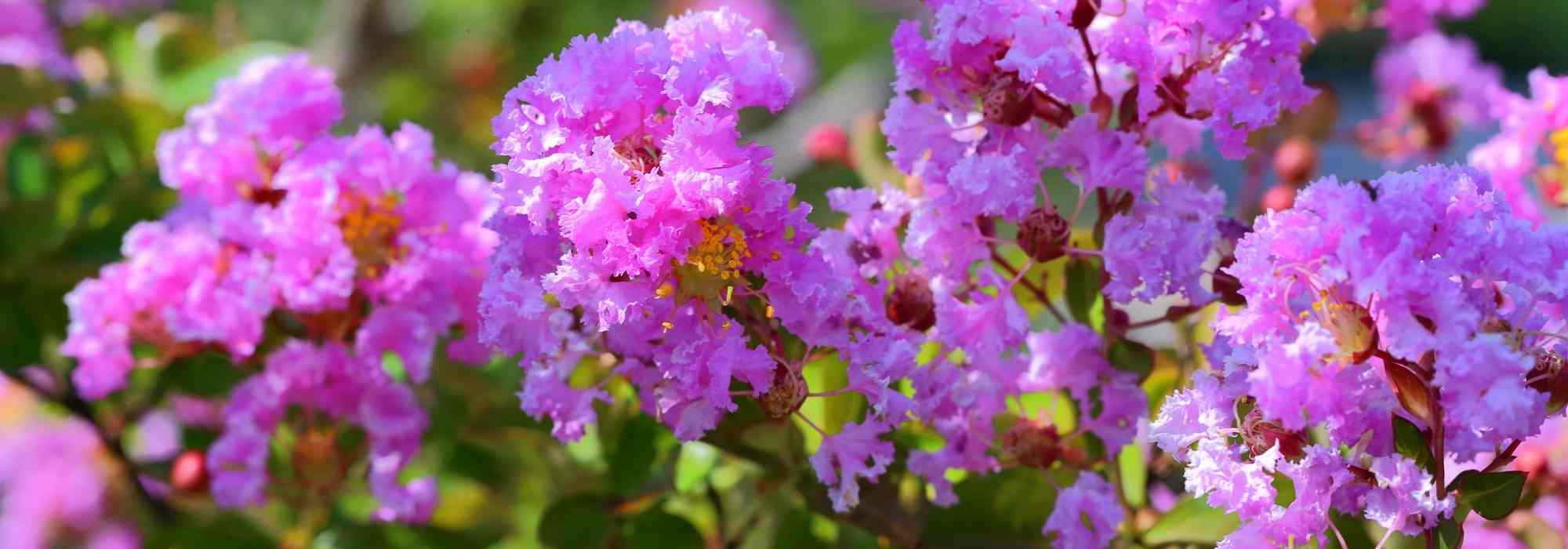
8 dwarf shrubs to grow in pots on a south-facing balcony
Discover our selection!
Summary
To green a balcony exposed to full sun, add colour, volume or provide a little shade, shrubs for pots are perfect! Perfectly cold-hardy, those we have selected can spend winter outdoors, withstand hot, dry conditions and establish in pots, large tubs and even, for the smaller specimens, in window boxes on the balcony. Flowering bushes, conifers and bushes with deciduous or evergreen coloured foliage — some varieties more compact than others — are suited to pot cultivation. They range in height from 25 cm to 1.60 m. Grown in pots, these compact specimens need more attention: fertiliser to favour flowering and growth and regular watering in summer, because in pots the substrate dries out faster than in open ground.
Discover our selection of the best varieties and their characteristics to help you make the right choice to enhance your balcony!
Buddleia alternifolia 'Unique': a veritable fountain of flowers
Buddleias, or butterfly bushes, are bushes prized for their fragrant flower spikes that attract butterflies. They can reach 4 m in height but dwarf forms exist, not exceeding 1.50 m at ripeness such as Buddleia alternifolia ‘Unique’. This cultivar has a very compact habit not exceeding 1.20 m in any direction and a very long flowering period from June to October. For 4 to 5 months, the bush turns into a mauve-blue, bushy fountain. Compact, this variety is easy to position in a large pot on the patio. Plant it in a sufficiently large terracotta container (minimum 60 cm height), ensure perfect drainage (expanded clay balls, pumice…) and plant it in a mix of leaf compost (3/4) and garden soil.
Unlike its in-ground companions, it will require a little more attention: fertiliser to support flowering and regular watering, especially in summer.
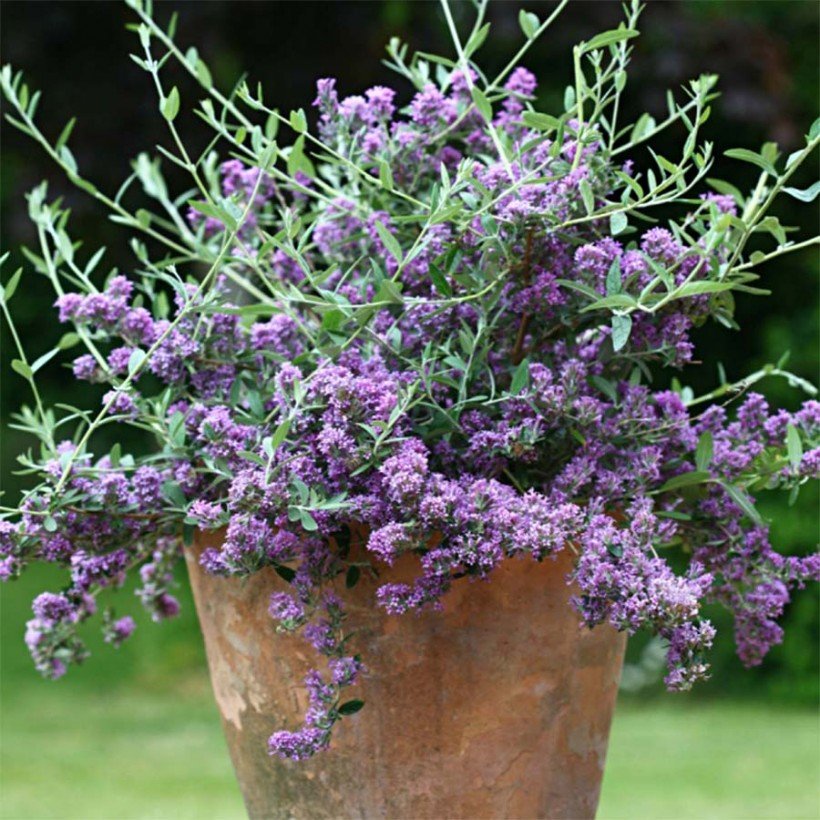
Photinia fraseri 'Chico': compact and more colourful
Photinias are elegant shrubs with evergreen foliage that mark seasons with their changing colours. They come in a wide range of heights, from taller specimens reaching up to 6 m to dwarf varieties. This brand-new Photinia variety forms a compact bush rarely exceeding 1 m in height with an 80 cm spread, ideal for a balcony! It forms a neat, very bushy rounded bush clad in foliage that remains all year round, even in winter: perfect for creating an elegant yet effective green screen! ‘Chico’ is part of latest selection of cultivars that are more compact, more colourful and more disease-resistant. It produces young shoots of bright red turning to copper, contrasting with glossy green of mature leaves.
Easy-to-grow, easy-to-maintain bush, hardy to -18°C when well sited, and especially benefiting from sun to enhance its colours!
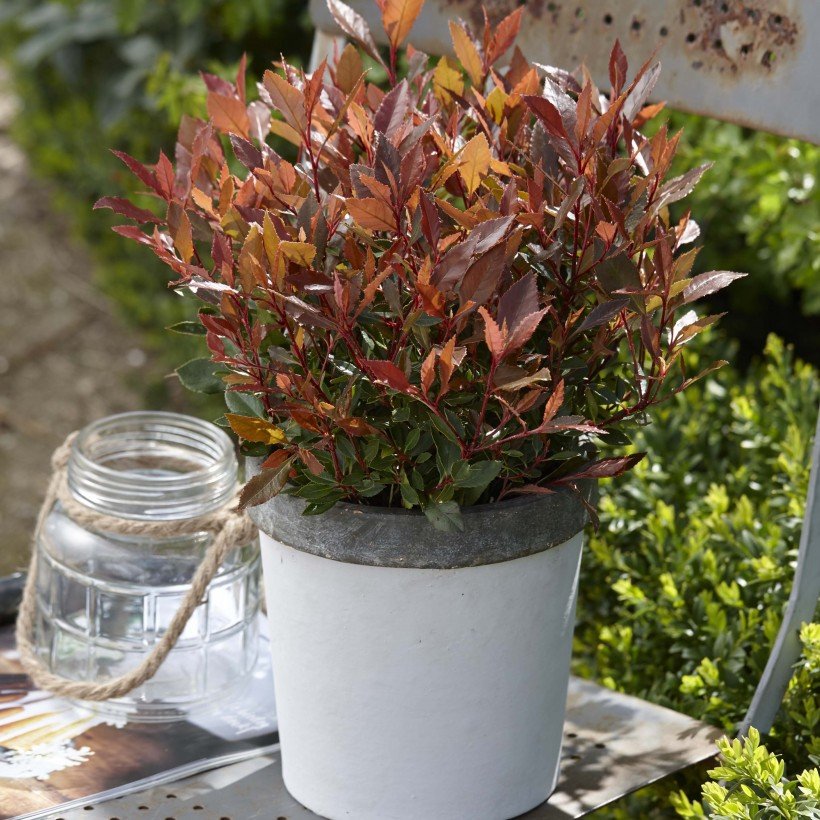
Discover other Shrubs for pots
View All →Available in 1 sizes
Available in 1 sizes
Available in 1 sizes
Available in 1 sizes
Available in 1 sizes
Available in 1 sizes
Available in 1 sizes
Available in 2 sizes
Available in 1 sizes
Available in 1 sizes
Lagerstroemia indica 'Terrasse Rouge': exotic ambience guaranteed
Lagerstroemia or Indian lilac is a shrub that offers refined and brilliant summer flowering. While larger Lagerstroemia can reach up to 9 m tall, dwarf varieties exist. Lagerstroemia indica ‘Terrasse Rouge’ is a fantastic small tree that is part of the new “Terrasse” range, a line of more resilient Indian lilac, hardy to -10°C, suited to regions north of the Loire and with a stocky habit perfect for container growing. It has also been selected for its abundant and early summer flowering.
With slow growth, it will reach about 1.5 m in height with a 1 m spread in 10 years. Choose a pot at least 60 cm high so roots have room. From June to October it bears flower spikes of deep magenta-red. It reveals magnificent bark, striate with reddish-brown, peeling in colourful plates (cinnamon, muted red, old pink, cream). Modest-sized, mounding and floriferous, with the vivid colour of its flowering, it is ideal for creating an exotic atmosphere on a balcony.
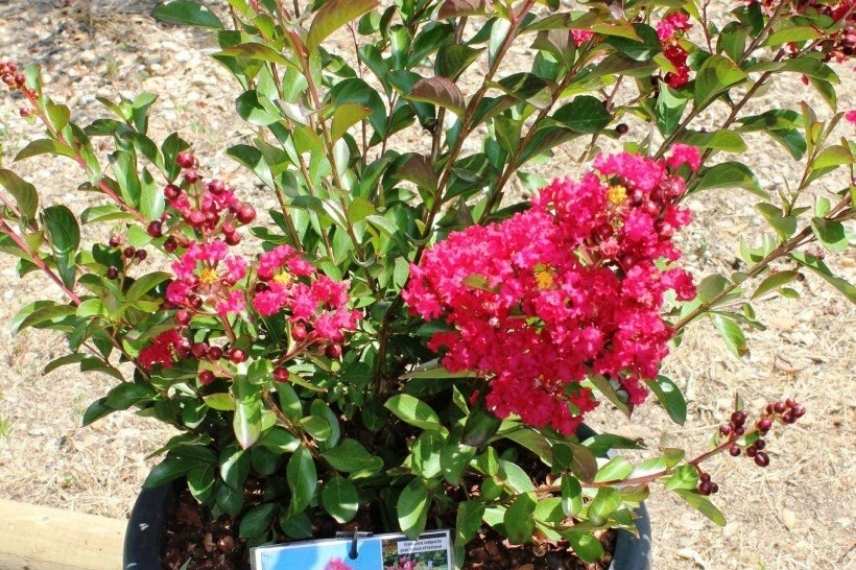
⇒ Lagerstroemia, Indian lilac: planting, cultivation and maintenance
You may also read
Fertilisers for planters and pots: which to choose?Pinus mugo 'Winter Gold': a ball of light in midwinter
Here is a recent dwarf form of mountain pine that will adapt well to container growing. After 10 years, it will not exceed 1.50 m high and 1 m in diameter. At full ripeness, the Pinus mugo ‘Winter Gold’ will form a shrub 2 m by 2.5 m wide. It very slowly forms a compact ball covered with short needles, dark green with yellow shoots in spring, becoming entirely golden-yellow in winter. Its golden colour will be even more pronounced if exposed to sunlight. This is a very luminous variety, ideal for bonsai art. It will be equally remarkable left in free form. This very hardy conifer (to at least -30°C) needs no pruning. It is perfect for creating a lasting Japanese atmosphere when paired with Ophiopogon and other dwarf conifers (Picea abies ‘Little Gem’, or Juniperus communis ‘Sentinel’).
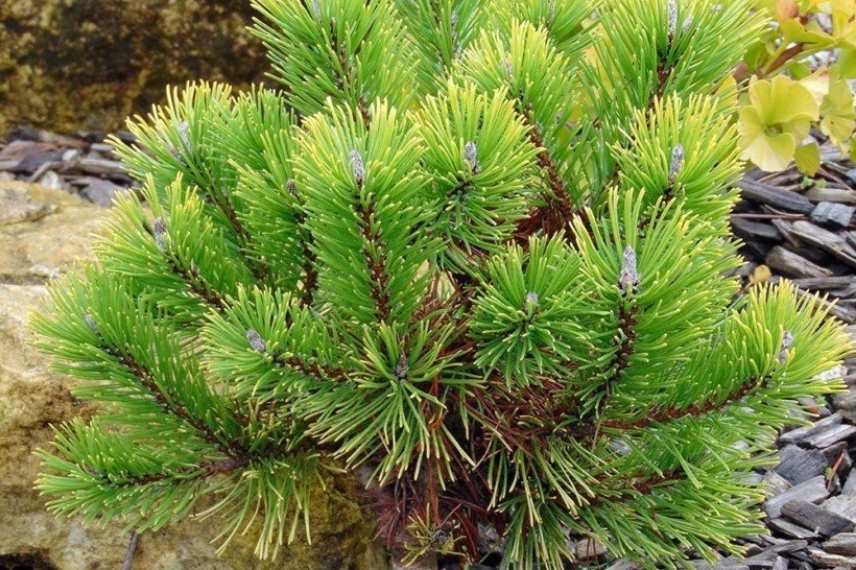
Physocarpus opulifolius 'All Black®': incredible foliage!
Physocarpus or ninebark-leaved Physocarps are attractive shrubs, very decorative for their colourful leaves changing from spring to autumn and their decorative bark. Compact forms grow very well in pots, offering interest through the seasons and are suitable for balcony layouts. Some dwarf varieties do not exceed 1.20 m in height. Le Physocarpus opulifolius ‘All Black® stands out for its reduced growth and compact habit; 1.2 m high by 80-90 cm wide. This cultivar All Black ‘Minall 2’ displays the darkest colour ever observed in Physocarpus; an almost black purple that develops a very beautiful red-orange colouring in autumn. The sunnier the position, the more intense the leaf colours will become. It will make an impact on a balcony where it can live for many years without requiring much maintenance. To complement its changing colours, plant Heucheras at its base.
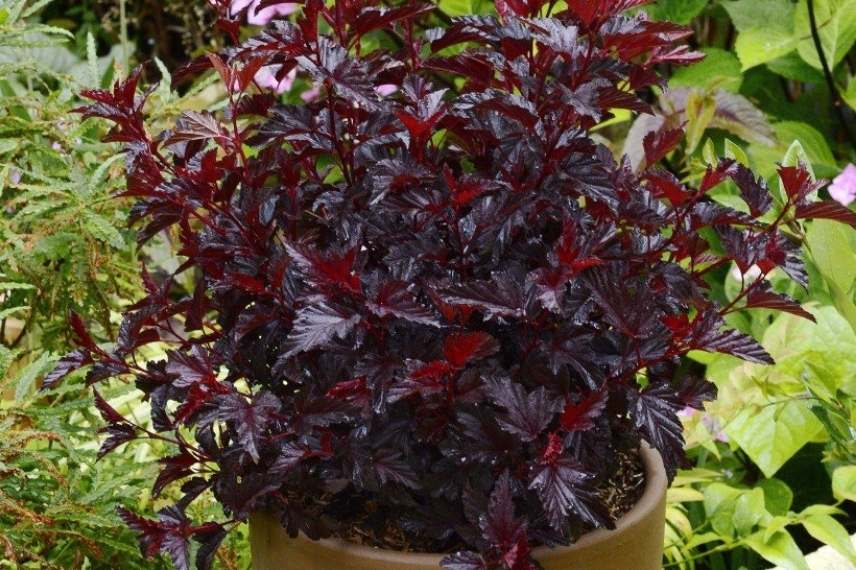
⇒ Physocarpus, ninebark-leaved Physocarp: planting, pruning and care
Ginkgo biloba 'Troll': a little botanical gem
Ginkgo biloba, or “maidenhair tree”, enchants with its characteristic fan-shaped foliage. Some varieties barely exceed 1 m across, while most ginkgos can reach 25 to 40 m in height. The Ginkgo ‘Troll’ will not exceed 50–70 cm across at 10 years, about 1.10 m at maturity. It has a globular, singular habit, very striking even in winter when it is naked. It will be sensational in a pot on a balcony. Its pretty deciduous leaves, slightly undulate, change from pale olive green to deeper green, then to golden yellow in autumn. This new dwarf ginkgo is a true little botanical gem! It’s a boon for city balconies as it tolerates urban pollution remarkably well. Very hardy, tolerant down to -30°C, it requires little maintenance; simply ensure it does not lack water during summer. It adds a Japanese touch and lots of character to a sunny balcony.
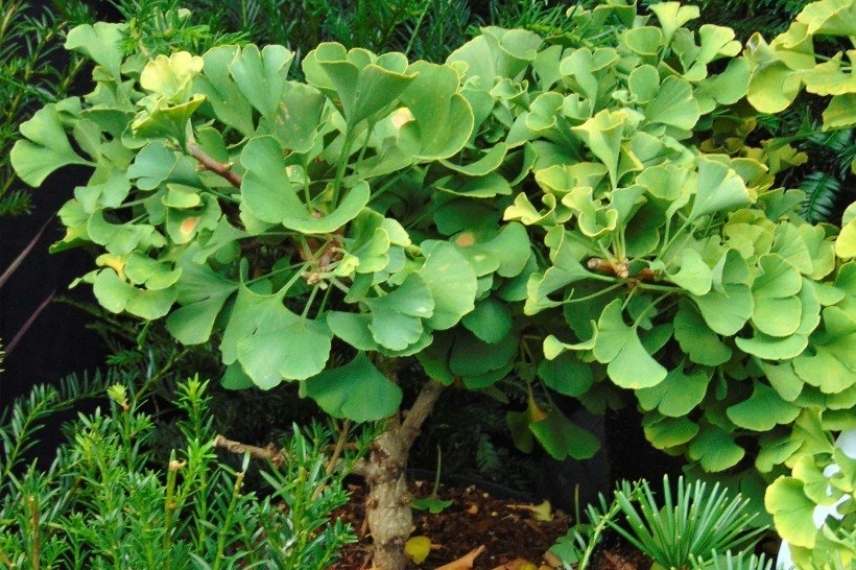
Punica granatum 'Nana': for Mediterranean ambience
Pomegranates – Punica granatum – are shrubs typical of the Mediterranean region, known for their large, sun-soaked fruits. They form compact bushes with gnarled trunks, usually reaching 3 to 5 m in height. However, for dressing a balcony, it is their dazzling flowering that matters! Punica granatum ‘Nana’ is a dwarf form of the fruiting pomegranate, not exceeding 1.20 m in height by 1 m in spread at ripeness, quite charming and remarkably floriferous! It produces flowers abundantly and continuously throughout summer, with crumpled petals of vivid bright orange, perfectly set off by glossy dark green foliage. It yields a few miniature, edible pomegranates that persist on the bush well into winter. It is easily trained as bonsai and, when planted in a large pot, looks magnificent on a Mediterranean-style balcony!
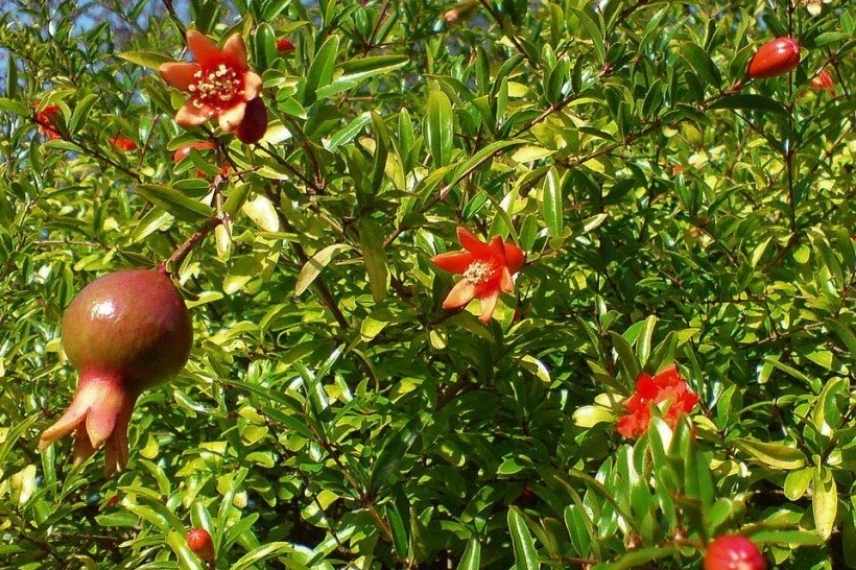
Juniperus squamata 'Blue Star': attractive foliage all year round
This dwarf juniper charms with its compact growth, its globose habit of 60 cm height for 1 m spread at ripeness. Hardy to −20 °C, this small conifer can spend Christmas on the balcony without a shiver! ‘Blue Star’ forms a pretty flattened ball, silvery-blue and evergreen, clad with small, very tightly packed, imbricate leaves. Attractive year-round, suitable for bonsai, architectural, hardy, undemanding and very ornamental, what more could you ask?! It will easily find its place in a contemporary setting.
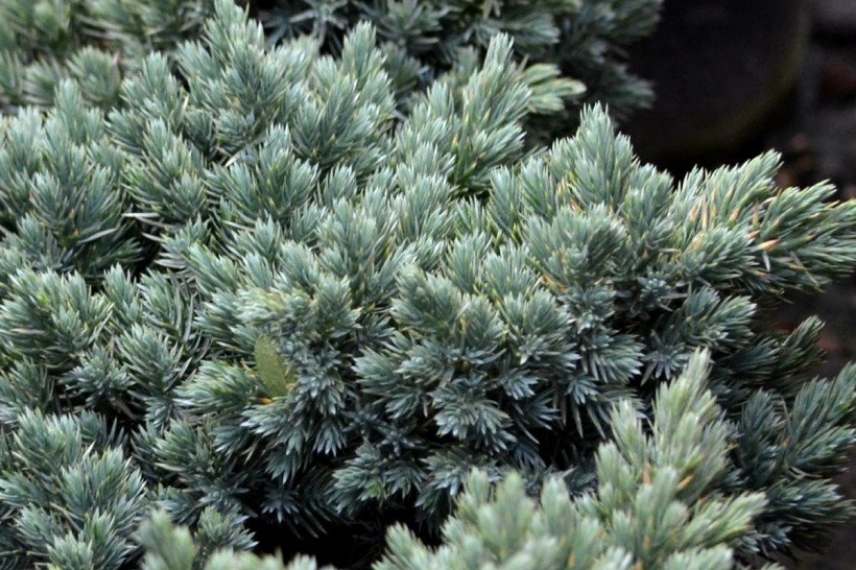
- Subscribe!
- Contents
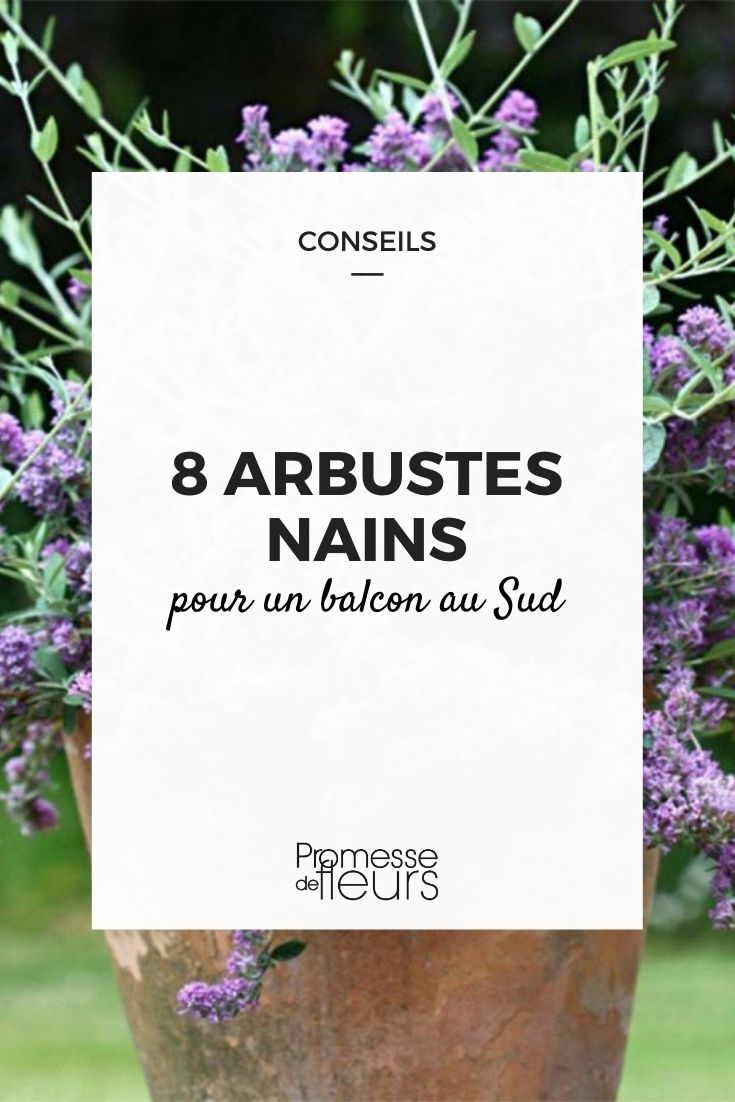































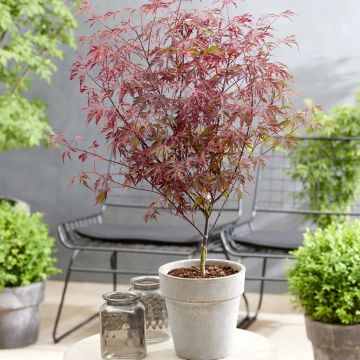

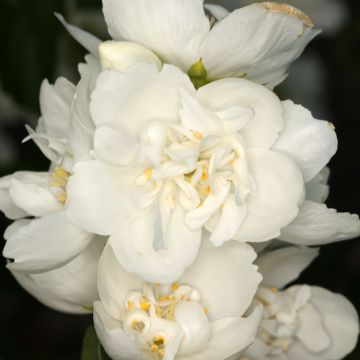

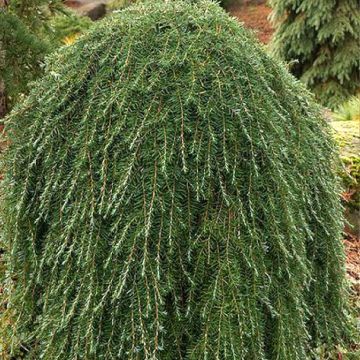
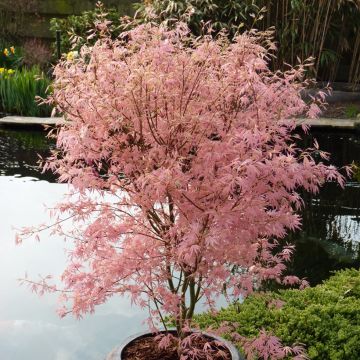
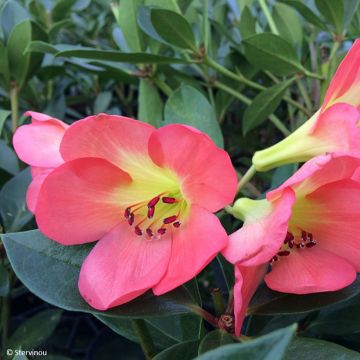
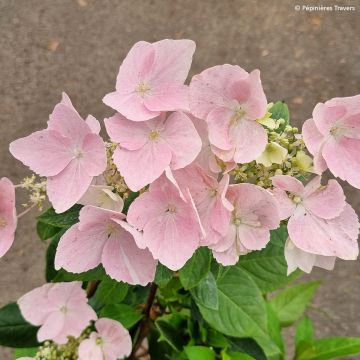
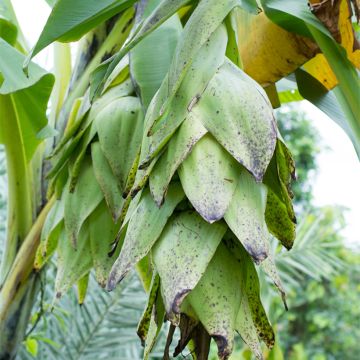
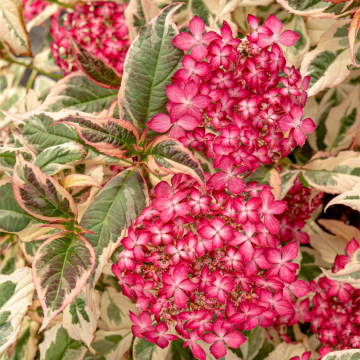
Feedbacks